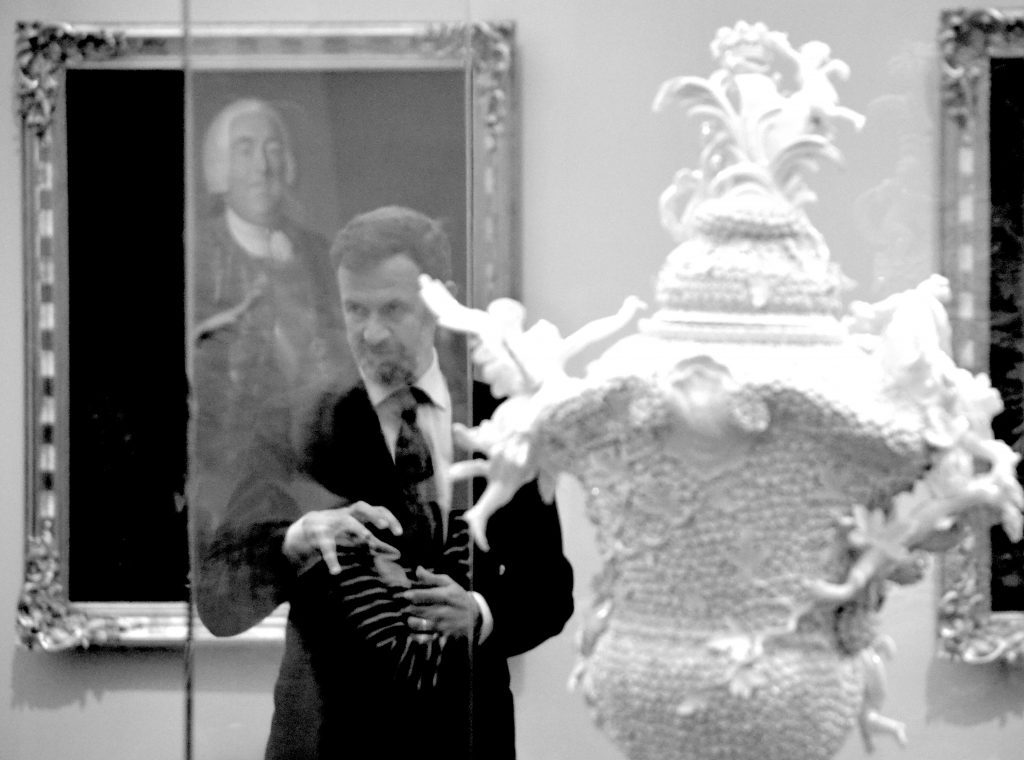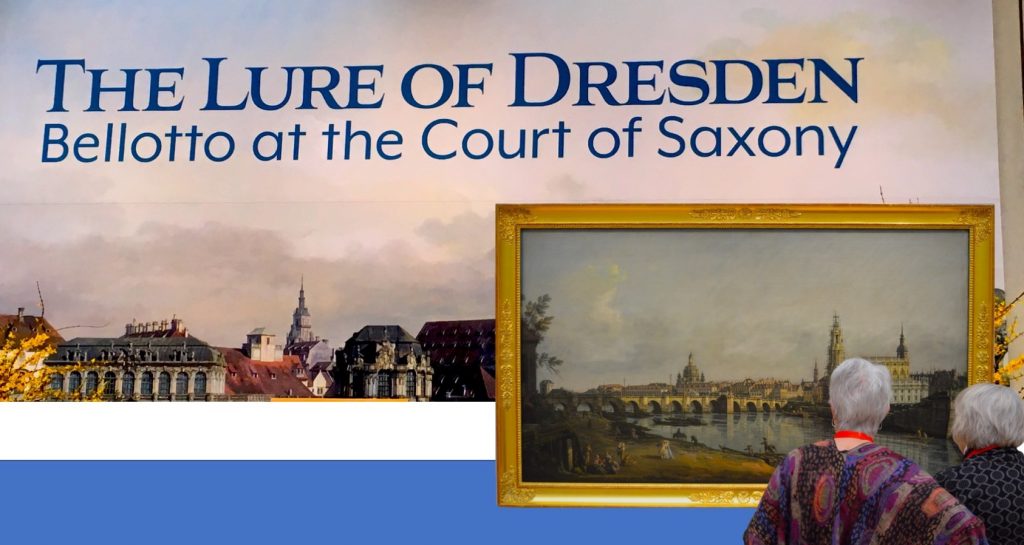
When meeting author Kurt Vonnegut at Texas Tech University in the mid ’80s — as a college journalist — I asked for his best, professional advice for a budding writer.
“That’s an easy one,” he said, laughing. “Marry a rich woman.”
Well … I write. I’m not married … but I know a rich woman. … That count, Kurt?
Perhaps more appropriately stated, this rich woman and her family are philanthropists, and coincidentally they founded and run the foundation for one of the top museums in the world —The Kimbell Art Museum. And it is because of The Kimbell that I am thinking of Vonnegut today.
If you know the author’s work at all, you know his biggest claim to fame is “Slaughterhouse Five,” a science fiction novel that also weaves in Vonnegut’s first-hand account of one of the most controversial acts of war during World War II … before we eventually ended that mess.
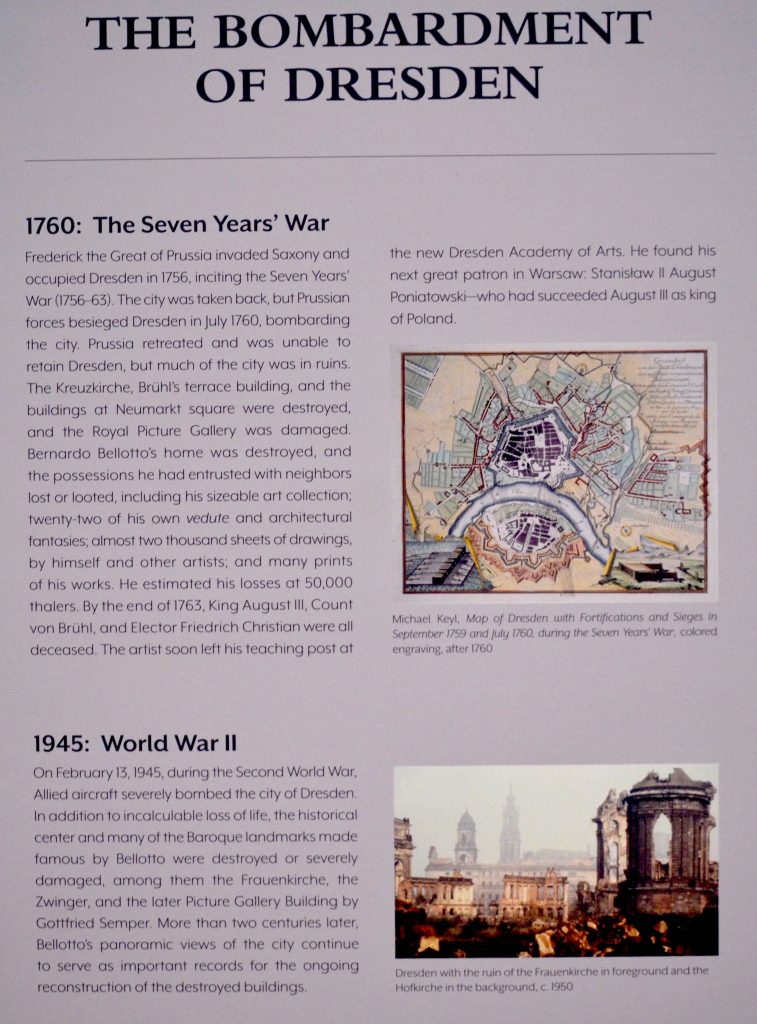
Vonnegut was a prisoner of war in Dresden, Germany and an eye witness to Allied bombing — both U.S. and British — that killed estimated hundreds of thousands of civilians and decimated a city that was not known for military significance, but for a Renaissance-like artistic culture.
The pre-WWII Dresden is what brings PingWi-Fi to Fort Worth’s Kimbell Museum for this blog … for the unveiling of “The Lure Of Dresden” — running Feb. 10 to April 28.
https://www.kimbellart.org/exhibition/lure-dresden
If you like detail and perfection, this is the exhibit for you. Imagine dozens of over-sized depictions of some of the most majestic architecture Europe had to offer, captured by the brush of master Bernardo Bellatto — a Venetian, a.k.a. Canaletto — who painted with overwhelming scale, detailed accuracy and colorful scenes of everyday life in the shadows of the 18th century Court of Saxony … a predecessor to Germany. (The Saxon rulers largely were responsible for the protecting the spread of the Protestant Reformation — a turning point in faith that “drew lines” and later brought war to the city …)
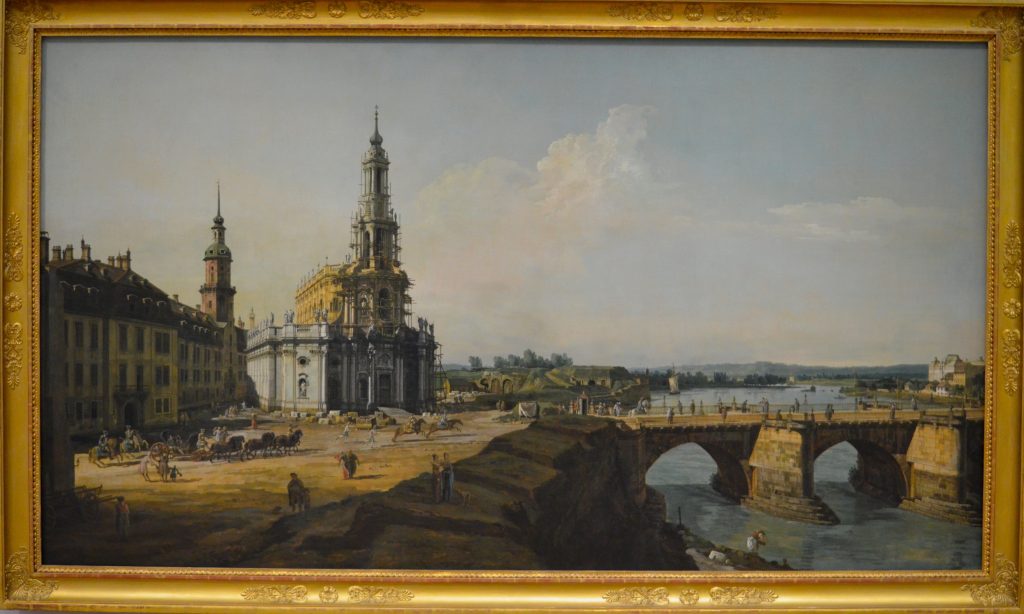
Dresden from the Left Bank of the Elbe above the Bridgehead of the Old Town
The architecture in the paintings includes massive fortresses perched on seemingly impenetrable hills, timeless stone bridges fending off the dark waters of the River Elbe, and immaculate houses of all things Holy, as well as governance. To this day — after near total destruction in both WWII and an earlier assault on the city in The Seven Years War — Dresden is still known as “Florence On The Elbe,” likening its important role as an artistic center to the most culturally rich city in Italy.
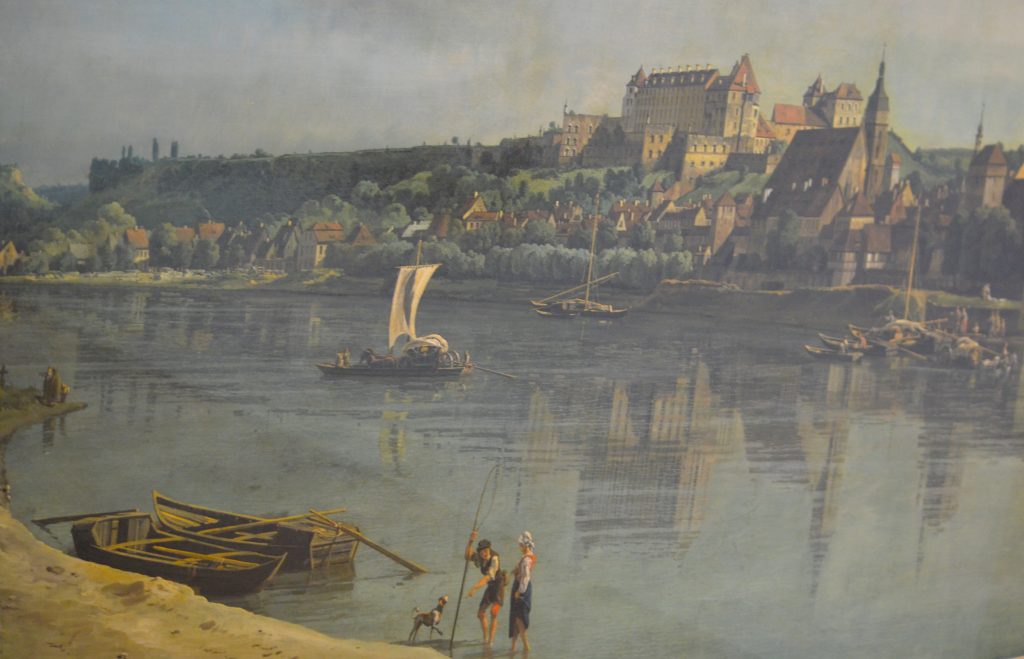
Pirna Viewed from Copitz (cropped)
Augmenting Bellatto’s huge, imaginative and artistic viewpoints of this glorious city, is somewhat of an air of controversy as well, regarding the genius’ use of simple drafting tools and the technically-advanced-for-the-time’s camera obscura in the initial stages, as he plotted out the designs of his paintings. But have no doubt … the paintings are all about the brush.
It was Bellotto’s accuracy and attention to detail that made his painting instrumental in the rebuilding of Dresden:
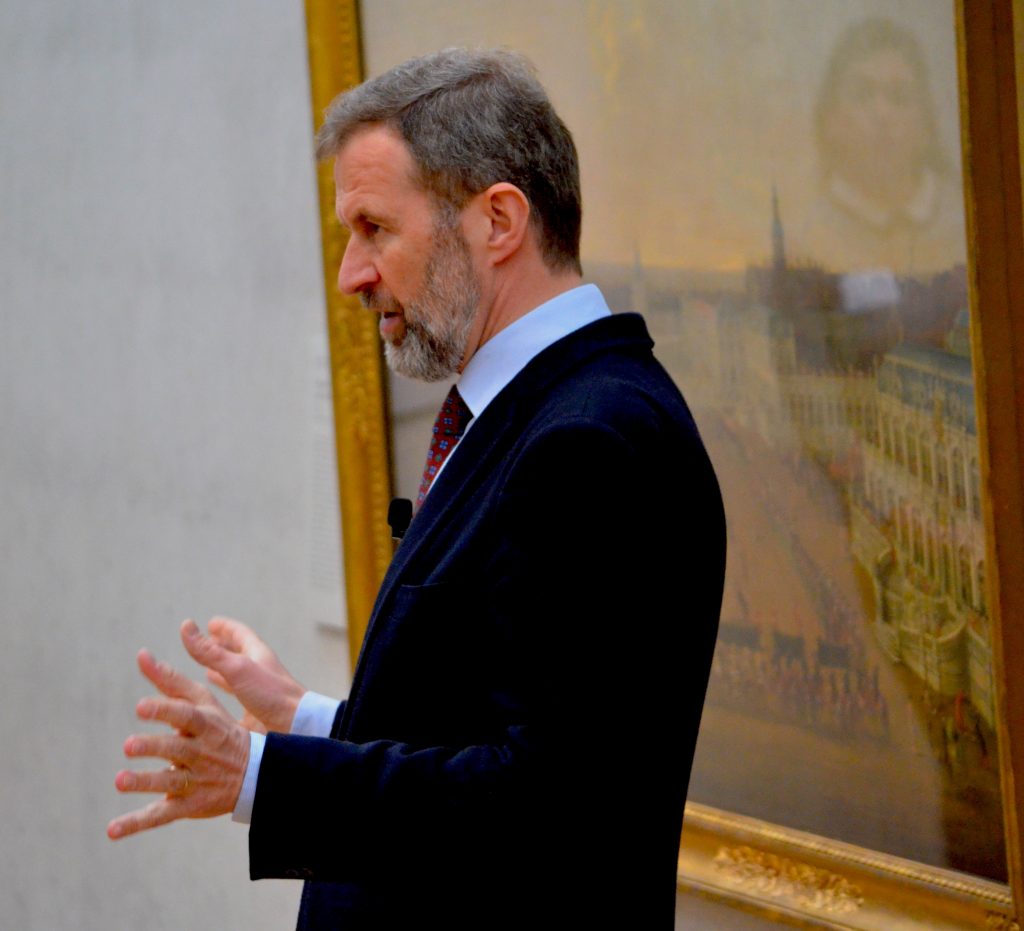
Stephan Koja
After the initial press preview of the exhibit, I think I will go back and spend more time, getting up close and personal with the paintings. But, quickly, I took the time to spot an unusually large eyeball in one cow as it roamed the foreground of Bellato’s work “Sonnenstein Fortress” — an easy catch for a guy who knows more about milking cows than mixing paints. I said to my German self, “Well, how German!” as I reviewed the precise repetition of uniformed soldiers in another painting. And I thought, “Now there’s a social media angle” (selfie) as the host of the media tour pointed out a tiny representation of Bellatto, seated and sketching in the foreground of one of the expansive city scapes.
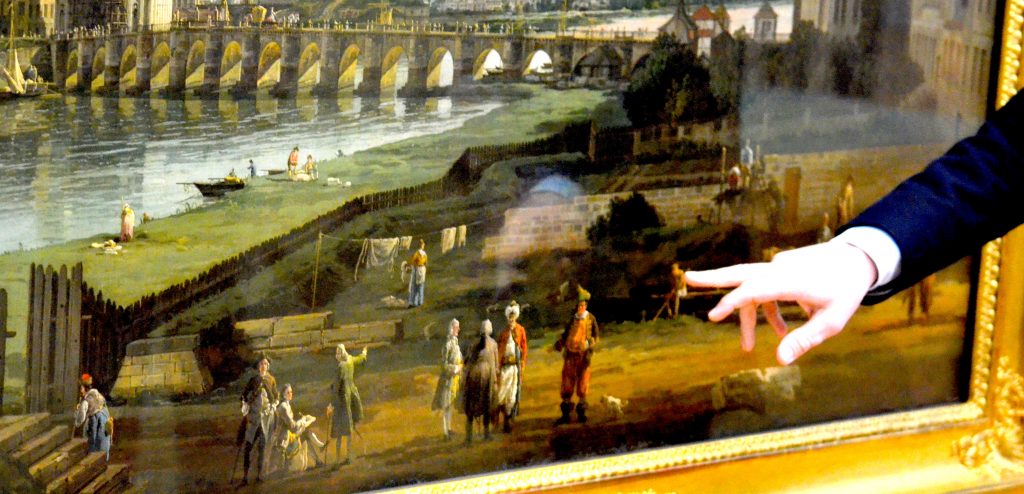
Dresden from the Right Bank of the Elbe Above the Augustus Bridge
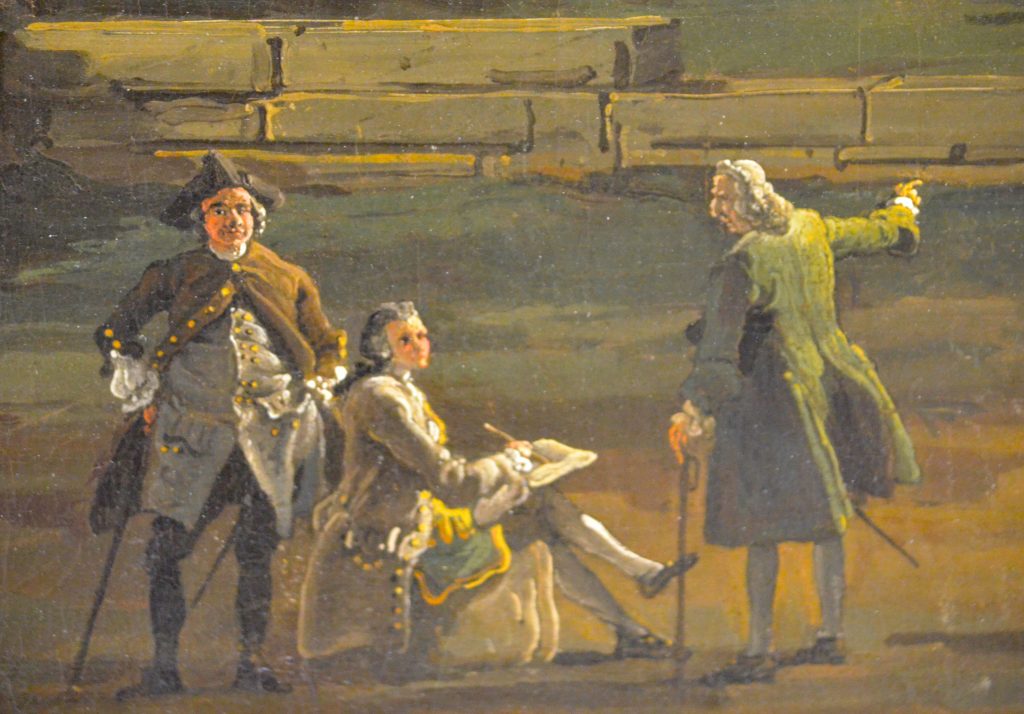
inset
As the tour guides explained the significance of various views of the bank of the Elbe, is seemed to me that Bellatto had almost duplicated the abilities of today’s aerial camera drones with his ability to show various views of the same setting. But, the painter’s variations are at ground level, for the most part, providing a much more abundant depth of field than that of an aerial perspective. Pretty cool.
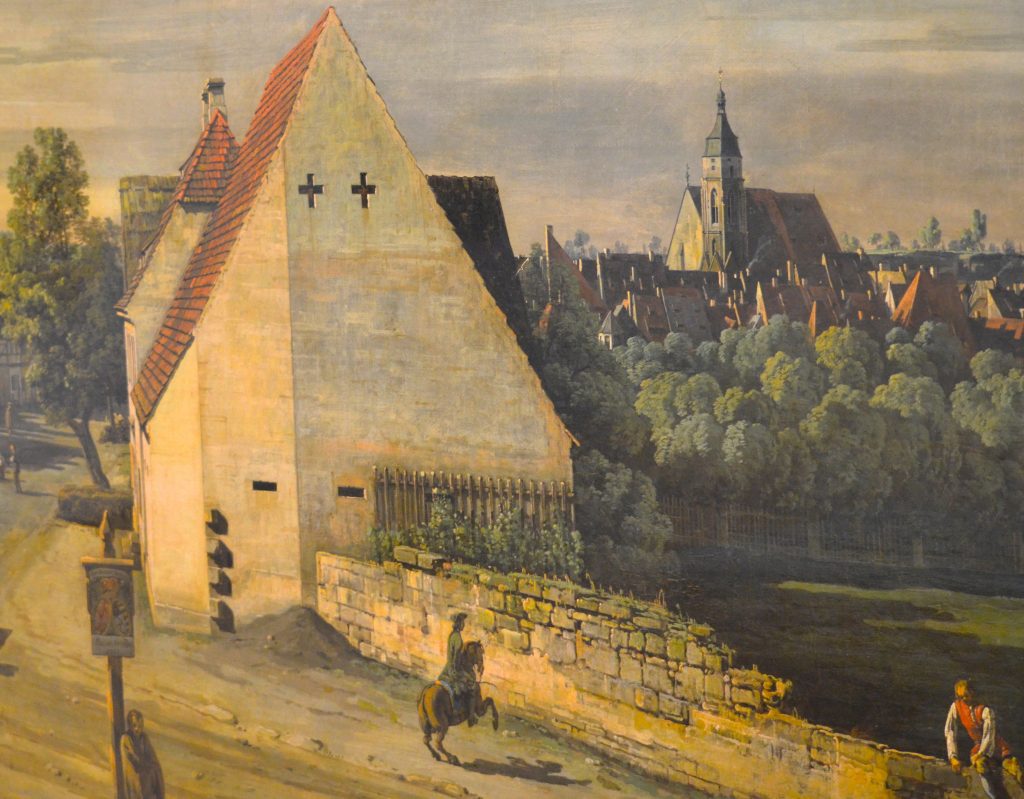
The Breite Gasse (cropped)
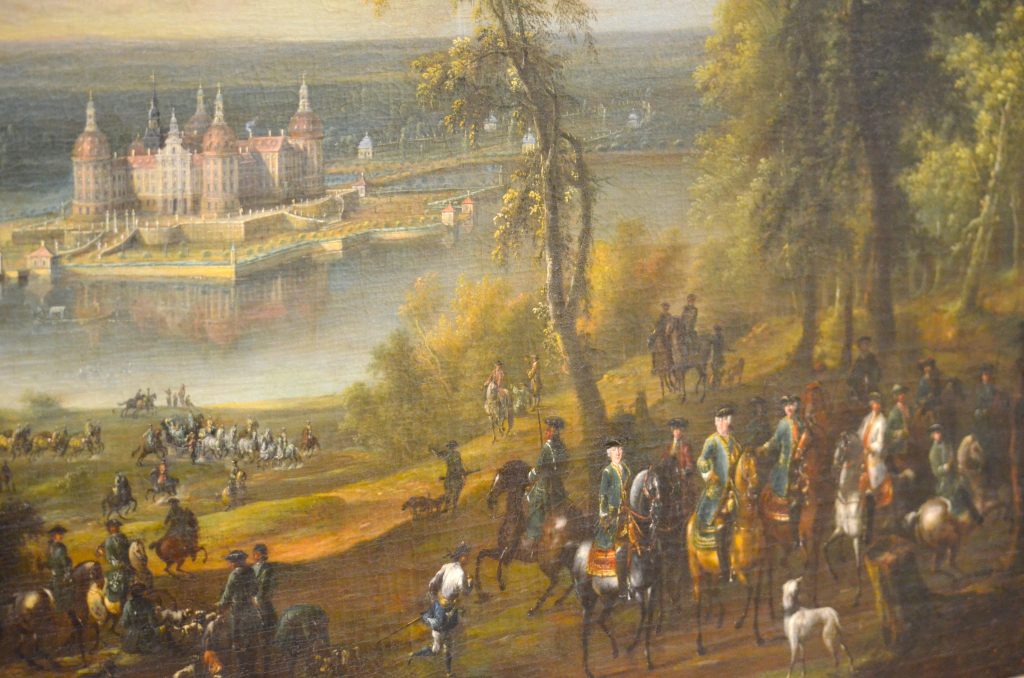
Landscape with Schloss Moritzburg
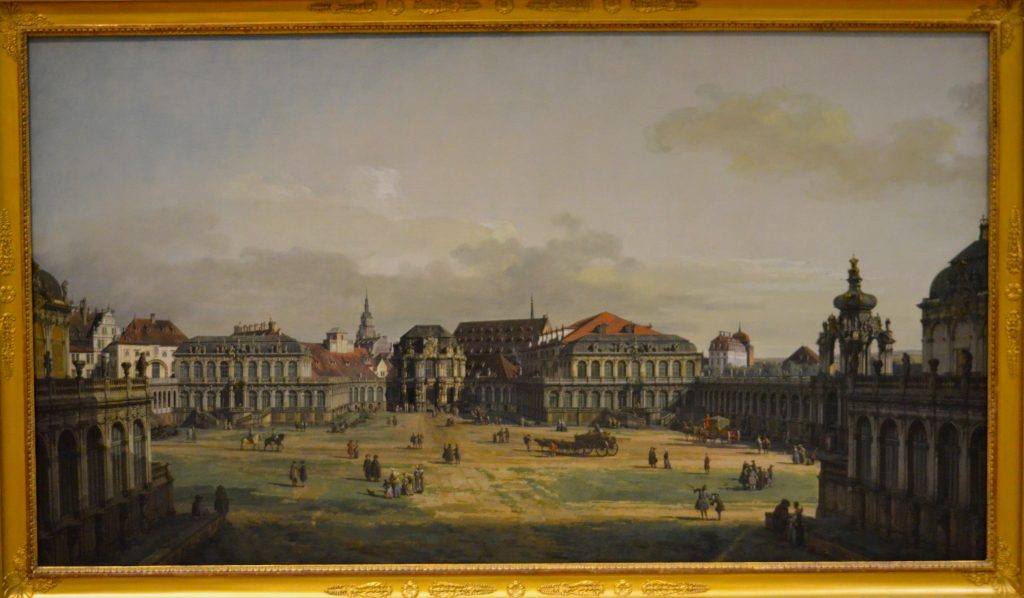
The Zwinger Complex in Dresden
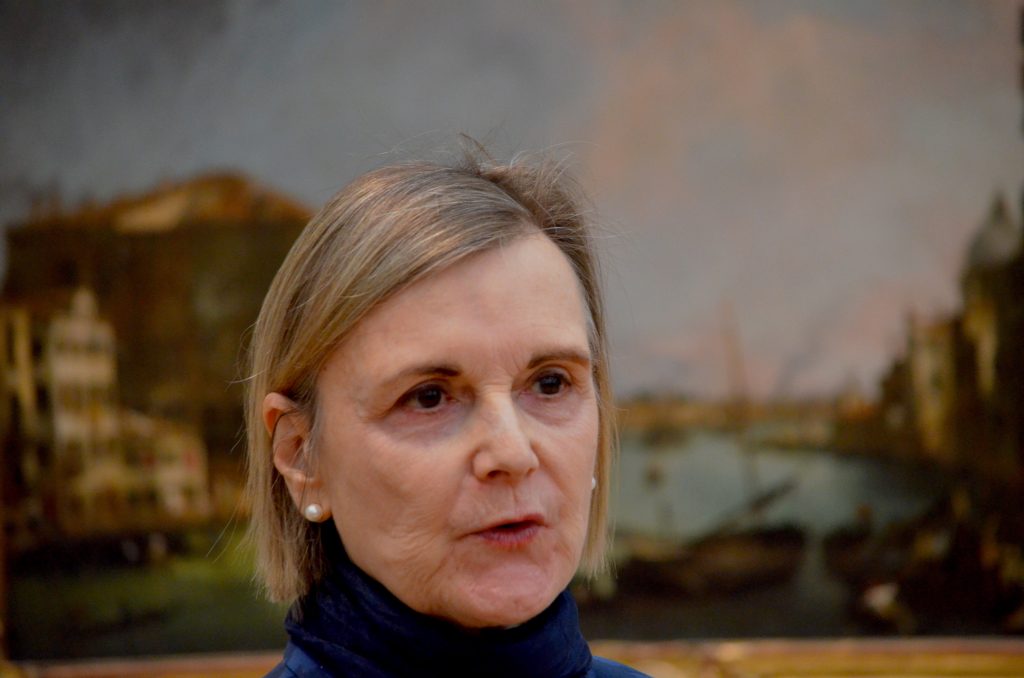
Nancy Edwards
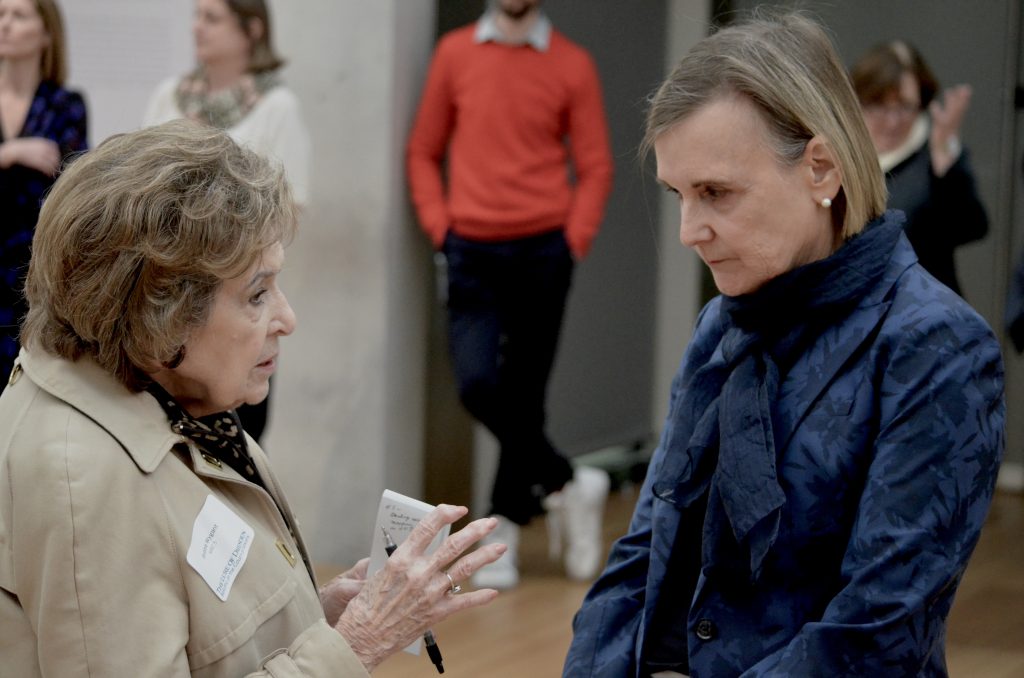
DFW media legend Bobbie Wygant, Edwards
Lastly … I gotta say … touring an exhibit with one of the world’s most renowned experts on the featured painter, is the way to go. Stephan Koja* shared anecdote after anecdote about the painter, his techniques and the art world’s reaction to the painter’s greatness. And Nancy Edwards, curator of European Art at The Kimbell, provided additional information throughout the tour and one-one-one after the tour. Hmmm … I wonder if an audio tour with a pre-recorded tour guide can compare?
I doubt it.
Know what I sayin?
* Stephan Koja, director of the Gemäldegalerie Alte Meister in Dresden
